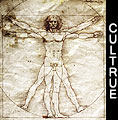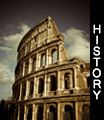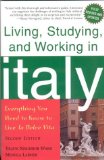Roman Republic
Winning the Battle of Lake Regillus in 493 BC, Rome established again the supremacy over the Latin countries it had lost after the fall of the monarchy. After a lengthy series of struggles, this supremacy became a fact in 393, when the Romans finally subdued the Volsci and Aequi.
During the Punic Wars between Rome and the great Mediterranean empire of Carthage, Rome's stature increased further and the victory over Carthage in the 2nd Punic War brought the first two provinces outside the Italian peninsula, Sicily and Sardinia. For the first time, Rome became the capital of a great overseas empire. At the same time, Italian farmers, driven from their ancestral farmlands by the advent of massive, slave-operated farms called latifundia, flocked to the city in great numbers, which expanded Rome's population even further. Spain followed and in less than 50 years the whole of mainland Greece was subdued. In the following years, Rome continued its conquests in Spain with Tiberius Gracchus, and it set foot in Asia, when the last king of Pergamus gave his kingdom to the Roman people.
The end of the 2nd century brought once again threat, when a great host of Germanic peoples, namely Cimbri and Teutones, crossed the river Rhone and moved to Italy. Gaius Marius was consul for six consecutive times, and won two decisive battles in 102 and 101 B.C. He also reformed the Roman army, giving it such a good reorganization that it remained unchanged for centuries.
By the end of the Republic, the city of Rome has become the largest city in the world (and probably the largest city ever built until the nineteenth century). Estimates of its peak population range from 450,000 to over 3.5 million people. All peoples from Italy who spoke Latin as their mother thongue were automatically considered Romans.
Imperial Rome
The Romans kept conquering new land and Constitutio Antoniana de Civitate of 211 granted Roman citizenship to all peoples under the rule of Rome, including Celts, Iberians, Daco-Thracians and Illyrians who had abandoned their own languages for Latin. An exception to this were the Greeks in the Eastern provinces, the Byzanthines, who called themselves Rhômaíoi (Greek for Romans), although they preserved their Greek language.
The growth of the Imperium Romanum, however, weakened Rome's old political system of the Republic. The dictatorship of Sulla, the extraordinary commands of Pompey Magnus, and the first triumvirate (Pompey, Crassus, Julius Cesar) formed in 60 BC could not solve the problems. In January 49 B.C., Julius Caesar the conqueror of Gaul, marched his legions against Rome. He ruled Rome for four years and declares himself the first Emperor of the Roman Empire, but is assassinated in 44 BC. After his assassination, the Senate tried to re-establish the Republic, but its leaders, Marcus Junius Brutus (descendant of the founder of the republic) and Gaius Cassius Longinus were defeated by Caesar's lieutenant Marcus Antonius and Caesar's heir, Octavian.
The second Triumvirate (Octavius and Antony and Lepidus) in 43 BC resulted in a struggle for power between Marcus Antonius and Octavius (later known as Augustus) in the years 43-31 and the victory of Octavian in 31 B.C., which marks the end of the Republic and the beginning of the Principate.
The Early Roman Empire (27BC to 284 AD) saw a succession of dynasties of Emperors: the Julio-Claudian dynasty (Augustus, Tiberius, Caligula, Claudius, Nero), the Flavian dynasty (Vespasian, Titus, Domitian) and the Severus dynasty (Septimius Severus, Caracalla, Heliogabalus, Alexander Severus, Decius, Valerian, Aurelian).
The Later Empire (284-476 AD) starts with the reign of Diocletian and the institution of Tetrachy or 4-man government.
.
.
.















